Configure Tunnels with Cisco Secure Firewall
Cisco Secure Firewall is a family of threat-focused next-generation firewalls. It can be managed centrally through Cisco Secure Firewall Management Center or through the on-box manager Firepower Device Manager (FDM). This guide covers the steps to configure site to site VPN between FTD devices and Umbrella via Cisco Secure Firewall Management Center centralized manager.
Until version 6.7, FTD only supports policy-based VPN (Crypto-map). Version 6.7+ supports Virtual tunnel interface (VTI), version 7.1+ supports IKE identity and policy-based routing (PBR) through graphic interface.
Table of Contents
- Configure Firepower Policy-based VPN
- Configure Firepower VTI, PBR, and Per Tunnel Identity
- Troubleshooting
Configure Firepower Policy-based VPN
At a high level, the Firepower configuration process consists of the following steps.
- Add Network Object
- Add Traffic Selector ACL
- Configure Site-to-Site VPN
- Configure NAT Policy
- Configure Access Policy
To start the configuration, log in to your Cisco Secure Firewall Management Center web interface at its IP address or FQDN; for example, https://FMC_IP_OR_FQDN.
Configure Tunnels in Umbrella
Firepower authenticates to the Umbrella IPsec headend by using a Pre-Shared Key (PSK) and IKEv2 IP identity.
Note: Umbrella does not support dynamic IP addresses for ASA and Firepower devices.
- Navigate to Deployments > Core Identities > Network Tunnels and click Add.
- Under Add A New Tunnel, enter a tunnel name. Choose FTD as Device Type and click Save.
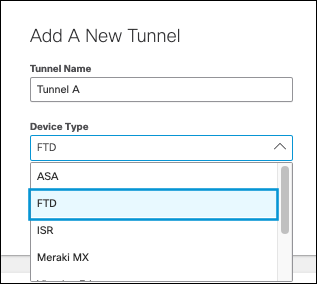
- In the Configure Tunnel ID and Passphrase section, for Tunnel ID, add the public IP address for the firewall. For Passphrase, add the pre-shared key. Confirm the passphrase.
Note: The IP address entered for the Tunnel ID must be the public IP used by the firewall. If this IP is already in use by another customer you will receive an error. Contact Umbrella support to verify you control the IP address. - Choose an appropriate site from the Associate Tunnel with Site drop-down list and optionally, enter an IP address to the IP Address Ranges field which you would like to send to Umbrella SIG.
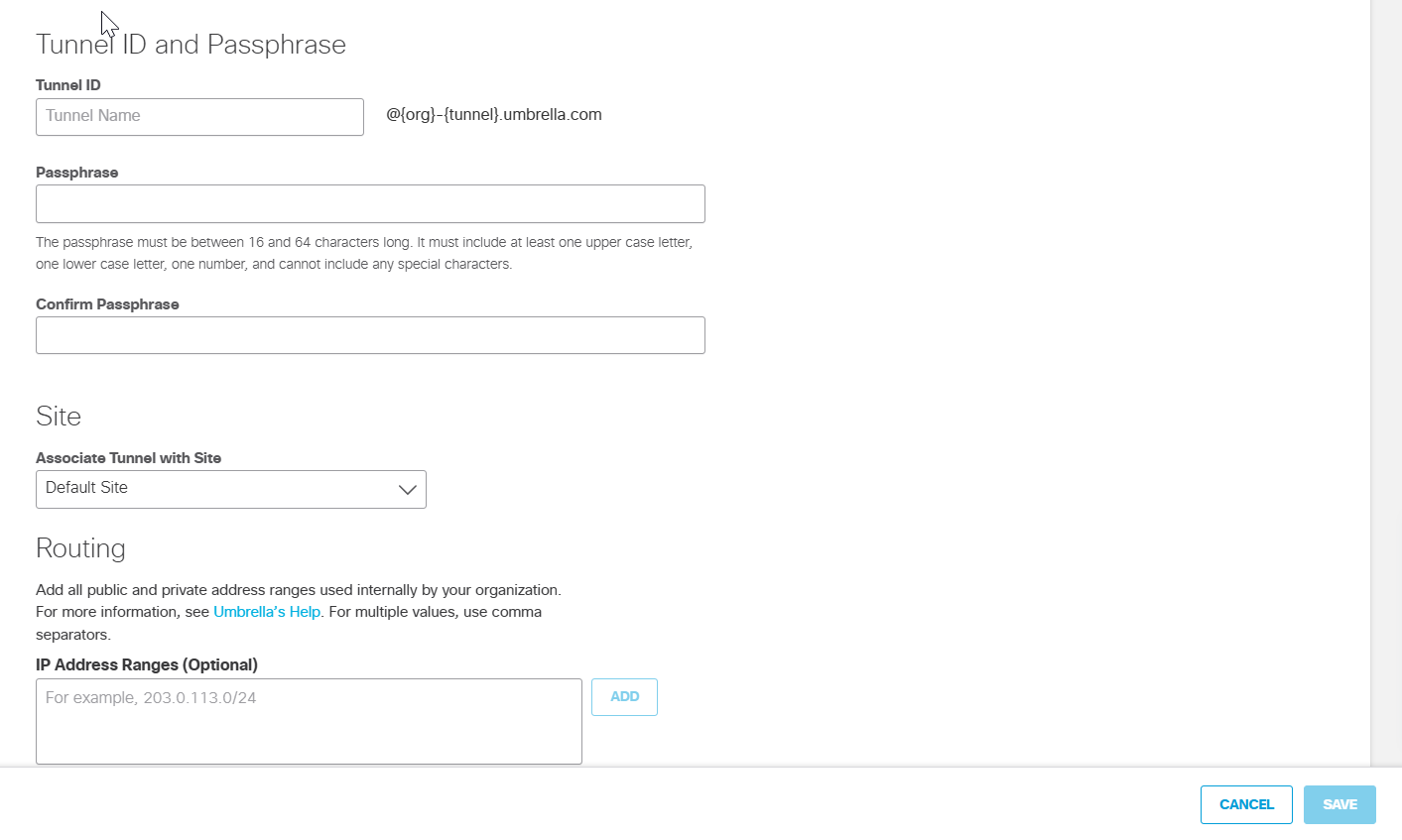
- Click Save and then copy the Tunnel ID and Passphrase.
The new tunnel appears in the Umbrella dashboard with a status of Not Established. The tunnel status is updated once the first IKEv2 INIT message containing the tunnel identity is received in one of the Umbrella data centers.
Add Network Object
Create a network object type “Group”. You will use this object in NAT configuration as well as in the Access Control List (ACL) in the IKEv2 traffic selector. Using a group object simplifies the task of bypassing encryption and provides NAT for the bypassed traffic.
Note: Public IP traffic from SIG users will appear to come from the address ranges 146.112.0.0/16, 151.186.0.0/16, and 155.190.0.0/16. Depending on your organization, you may be required to inform service providers that you access through the Umbrella service of these additional IP address ranges. For example, some service providers require prior knowledge of the IP address ranges used before allowing access to their service.
- Navigate to Objects > Object Management > Network > Add Network > Add Group.
- Add the Umbrella resolvers IP address so the DNS queries are not sent through the tunnel.
Currently, if the DNS queries are sent through the tunnel it will be NATed to 146.112.0.0/16 IP range and queries will not be linked to the user's dashboard. By bypassing the traffic to Umbrella resolvers it is possible to add a public IP address to the dashboard (network deployment) and retrain DNS visibility and enforcement capabilities.
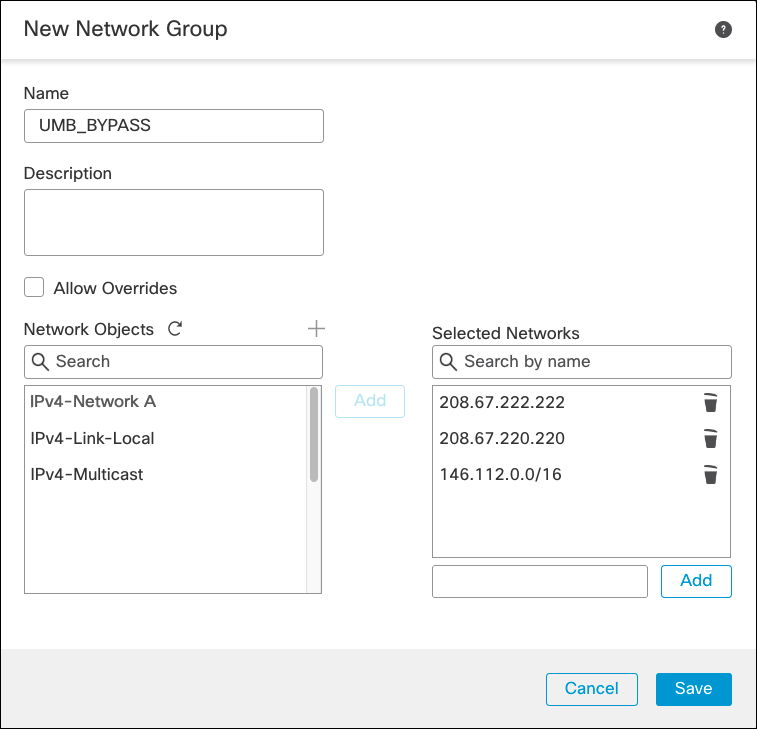
- Optionally, add 146.112.0.0/16 as a network. This is a way around the IPSec tunnel throughput limitation by bypassing traffic to the Umbrella proxy infrastructure. Web traffic from endpoints with PAC file or AnyConnect SWG modules as well as proxy chaining traffic can then go outside the IPSec tunnel and achieve higher throughput.
Add Traffic Selector ACL
This ACL is used in the IKEv2 security association negotiation (Umbrella will negotiate a single security association only) as well as when Firepower makes decisions about when to encrypt traffic. It will not encrypt traffic denied in the ACL when the deny statement comes before the permit statement.
- Navigate to Objects > Object Management > Access List > Extended > Add Extended Access List.
- Enter a name for the ACL and then click Add to add the Access Control Entries (ACE).
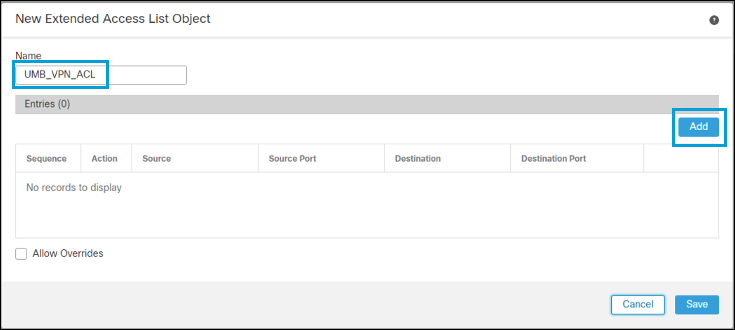
a. The first entry denies traffic to the network object type group containing the Umbrella resolvers. Optionally, traffic to the
146.112.0.0/16and155.190.0.0/16subnets can also be denied.
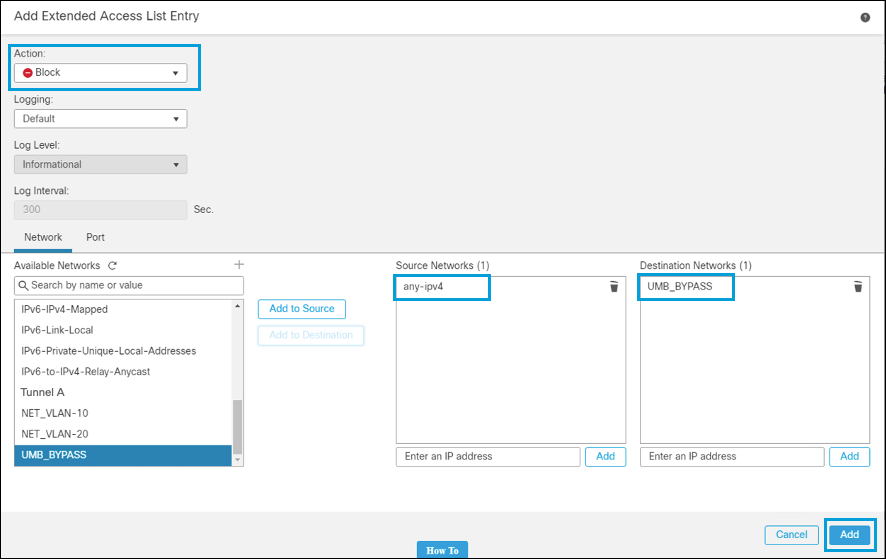
b. The second entry allows traffic from any IPv4 address to any IPv4 address. This is also the entry IKEv2 uses to negotiate the IPSec Security Association (traffic selector).
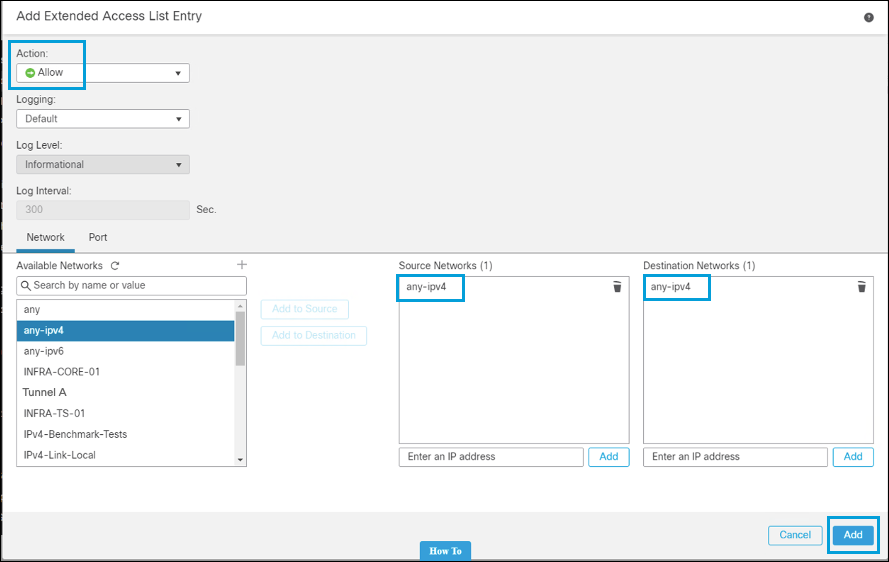
- After you have added the entries, click Save.
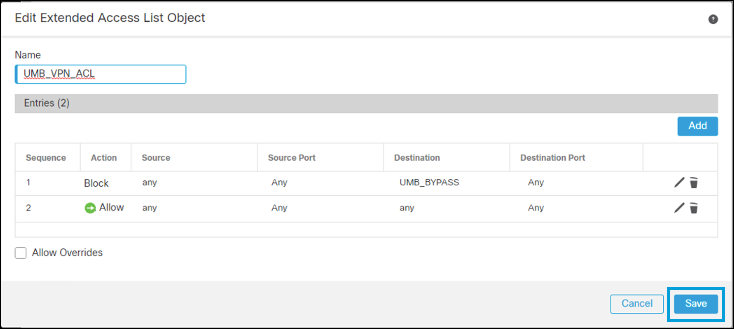
Configure Site-to-Site VPN
You can now configure the site-to-site VPN. For the current list of Umbrella data centers supporting IPSec connections, refer to the Umbrella data centers list.
- Navigate to Devices > VPN > Site to Site > Add VPN > Firepower Threat Defense Device.

- Enter a name for the topology. Check IKEv2 box (Umbrella supports IKEv2 only). For more information about supported protocols, see Supported IPSec Parameters.
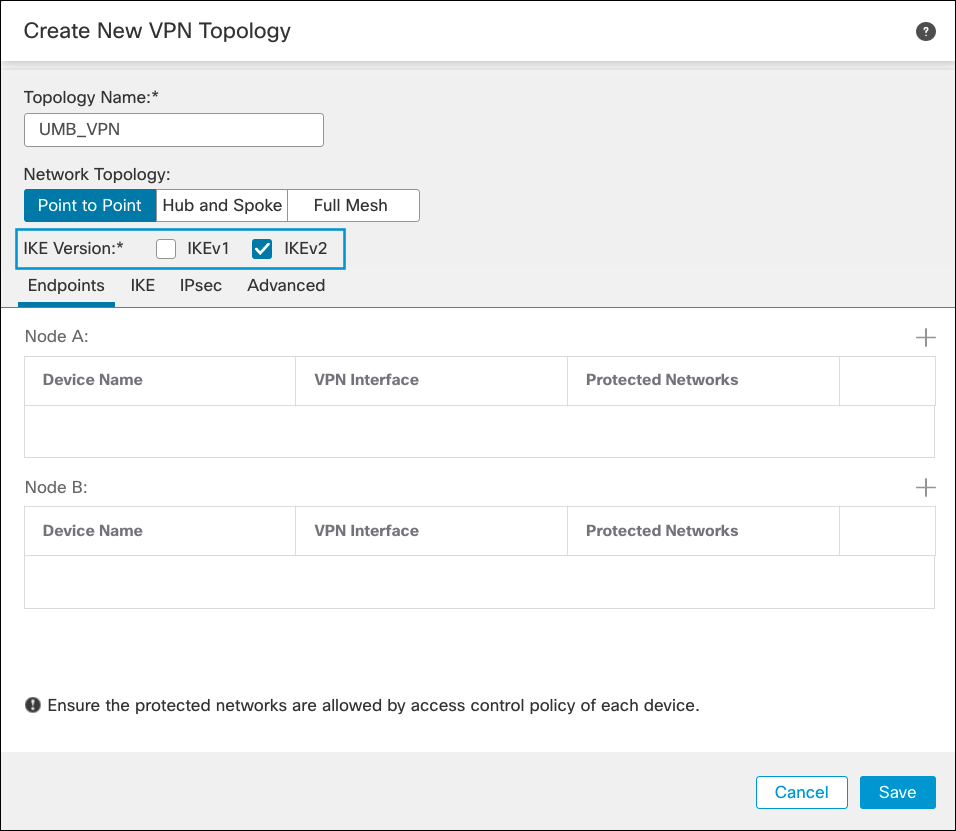
- Add two peers: the local peer (FTD device) and the remote peer (Umbrella).
a. Click Add for Node A and select the FTD device as the local peer and the interface sourcing the IPSec connection. The IP address is automatically populated.
b. Under Protected Networks, select Access List (Extended), and then select the ACL you created in the Traffic Selector ACL. Click OK.
c. Click Add for Node B to add the remote peer.
d. Select Extranet and enter a name. Select Static, and enter one of the Umbrella datacenter IP addresses. Then select the same ACL, then click OK.
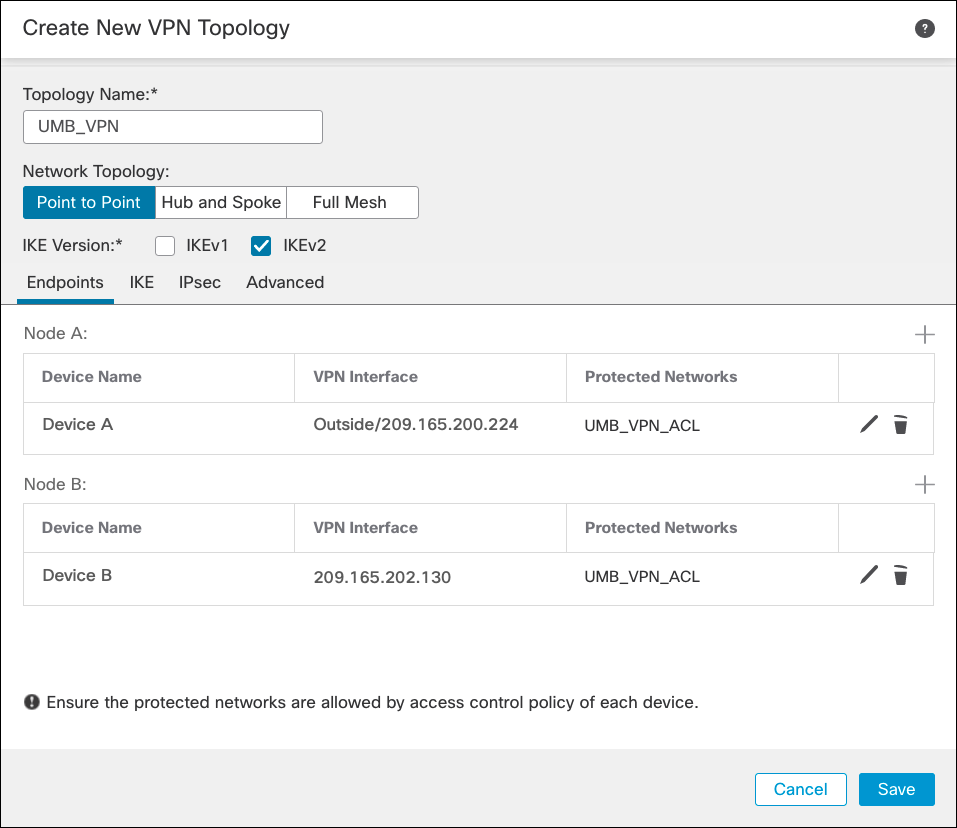
- Click the IKE tab to add a new IKEv2 Policy containing the desired crypto algorithms. For more information about encryption supported by Umbrella, see Supported IPsec Parameters.
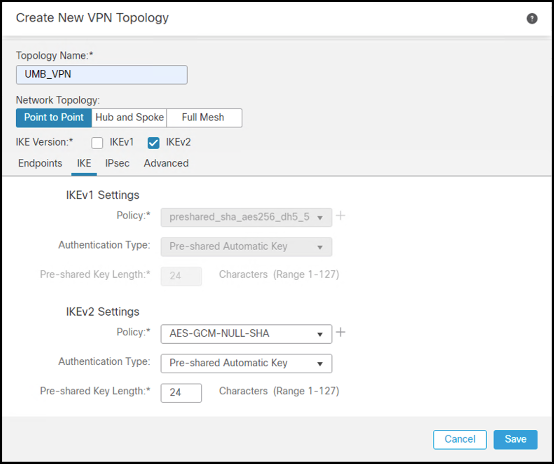
- Enter a name for the IKEv2 policy, then select the parameters from the Umbrella list.
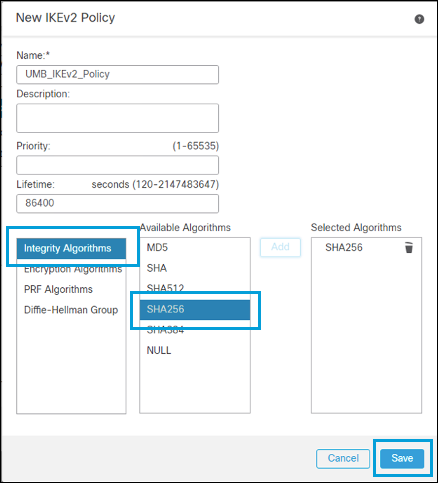
- After saving the IKEv2 Policy, select it. Choose Pre-shared Manual Key from the Authentication drop-down menu and enter the key.
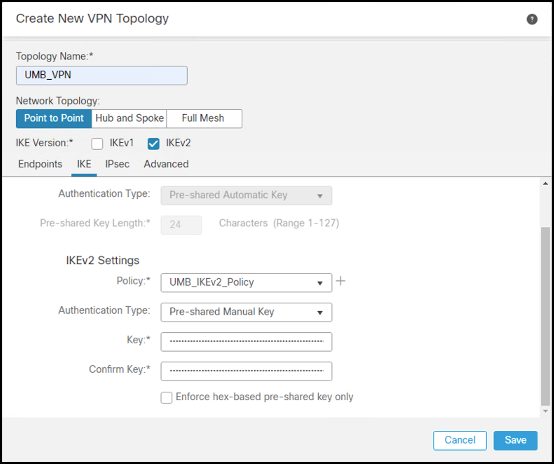
- Under IPSec Configuration, add a new IKEv2 IPsec Proposal with your crypto algorithms or select an existing profile. Select Tunnel for IKEv2 Mode and uncheck Enable Reverse Route Injection and Enable Perfect Forward Secrecy.

- In the Advanced tab under IKE, enable IKE Keepalive. Select ipAddress as the Identity Sent to Peers, and disable Peer Identity Validation.
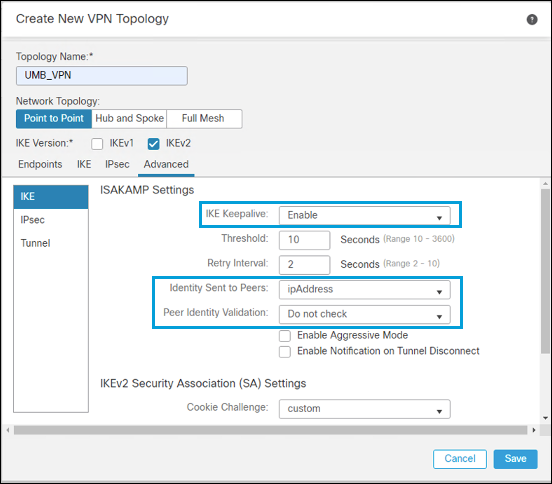
- Under IPSec, select Enable Fragmentation Before Encryption, then click Save.
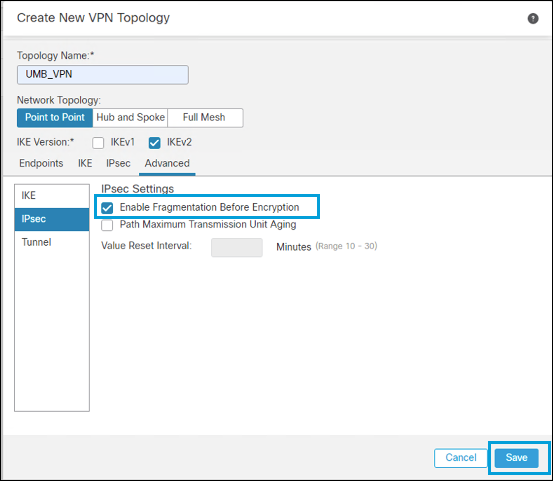
Configure NAT Policy
If a NAT policy currently exists in the Firepower device, this policy must be changed to exempt traffic going through the tunnel from being NATed. Umbrella requires the source of the connection to be the client’s original private IP address — the public IP is not currently supported.
If you use the public IP in your internal network, you must NAT the traffic to a private IP address pool before sending the traffic to Umbrella, as most of the traffic goes through the Umbrella IPSec tunnel. It is easier to create NAT for the traffic not going through the tunnel and use no NAT for all other traffic.
In this example, the network object containing the Umbrella resolvers' IP address is referred to in the NAT statement. All traffic sourced from the internal network with a destination matching the network object will have the source IP NATed to the firewall interface address. All other traffic will not match the NAT statement, and so will be forwarded to Umbrella without being NATed.
- In Cisco Secure Firewall Management Center, navigate to Devices > NAT > New Policy > Threat Defense NAT.
- Enter a name, then select the FTD device to apply the policy. Click Save.
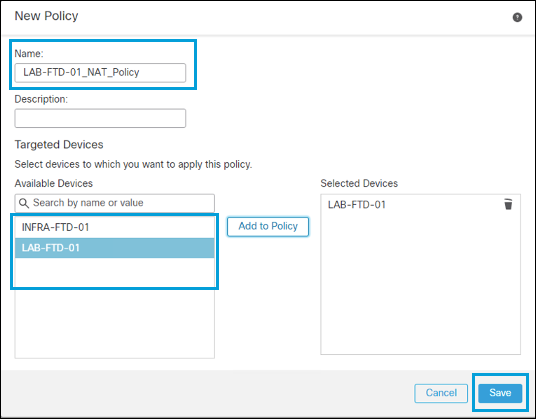
- Click Add Rule.
- Select Manual for NAT Rule, then select Dynamic for type. In Interface Objects, choose Inside for the Source and Outside for Destination.
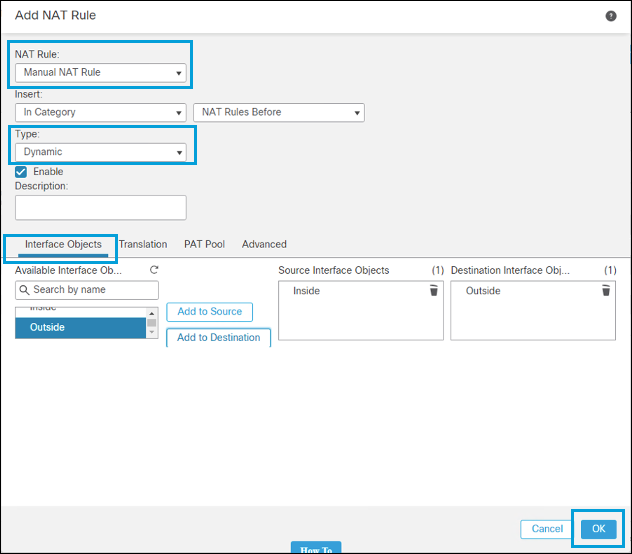
- Under Translations, select a network object containing the internal subnet as the Original Source. Specify the Umbrella bypass network object you previously created as the Original Destination.
This object contains the Umbrella resolvers' IP address, as well as (optionally) the
146.112.0.0/16,151.186.0.0/16, and155.190.0.0/16networks, plus any other traffic you may want to exempt from the tunnel. Using this object facilitates the configuration, because when hosts and subnets are added or removed from the object, both the IPSec traffic selector and NAT statement are updated.
- Select Destination Interface IP as the translated source, and the same object as the translated destination.
This ensures that the internal network will be NATed to the interface IP address only when the destination is the network object containing the resolver's IP address. Other destinations will not match the NAT statement.
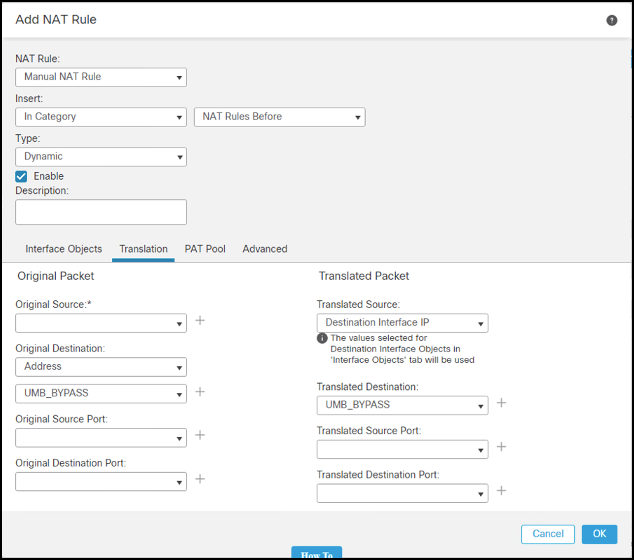
- Click OK, and then click Save. The NAT policy is configured.
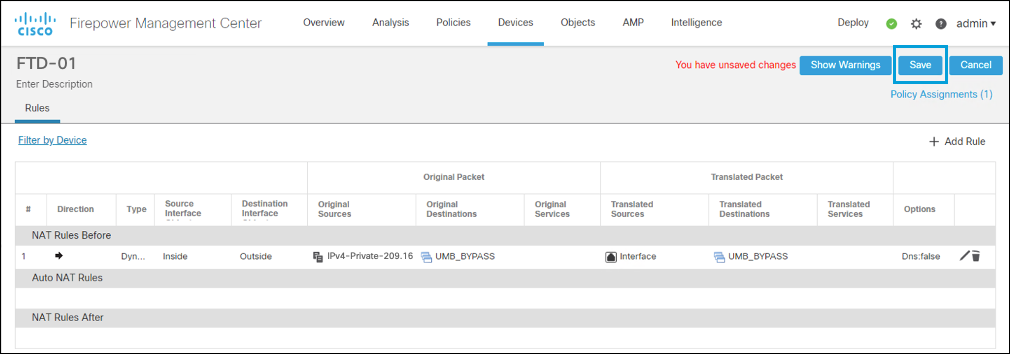
Configure Access Policy
The Access Policy in Firepower combines all the other policies (SSL Decryption, DNS, Prefilter, Identity, and so on). At a minimum, an entry permitting inside traffic going out should exist. In production environments, you normally add more specific access entries.

Deployment Not Automatic
A policy configured in Cisco Secure Firewall Management Center is not automatically applied to FTD devices. The configuration must be enabled by clicking Deploy in the top configuration bar.
Configure Firepower VTI, PBR, and Per Tunnel Identity
At a high level, the Firepower configuration process consists of the following steps.
To start the configuration, log in to your Cisco Secure Firewall Management Center web interface at its IP address or FQDN; for example, https://FMC_IP_OR_FQDN.
Configure Tunnels in Umbrella
From Firepower 7.1+, FTD can authenticate to the Umbrella IPsec headend by using a Pre-Shared Key (PSK) and IP or FQDN IKEv2 identity. If the Firepower is behind a NAT device, FQDN identity is the only possible option.
Virtual tunnel interface is available from Firepower 6.7+ with Policy Based Routing (PBR) through FlexConfig. Firepower 7.1+ adds Per Tunnel Identity and Policy Based Routing via graphic interface.
Note: When supported by the device, FQDN is always the preferred option.
- Navigate to Deployments > Core Identities > Network Tunnels and click Add.
- Under Add A New Tunnel, enter a tunnel name. Choose Others as Device Type and click Save.
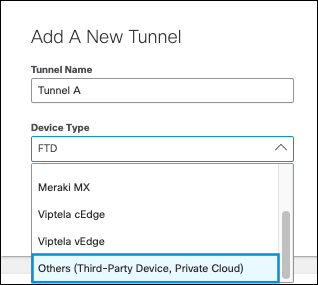
- In the Configure Tunnel ID and Passphrase section, For Purpose of the Tunnel, select Secure Internet Access.

- In the Set Tunnel ID and Passphrase section, select FQDN or Email for Authentication Method and add a value for Tunnel ID.
- For Passphrase, add the pre-shared key. Confirm the passphrase and click Save.

The new tunnel appears in the Umbrella dashboard with a status of Not Established. The tunnel status is updated once the first IKEv2 INIT message containing the tunnel identity is received in one of the Umbrella data centers.
Configure Site-to-Site VPN
You can now configure the site-to-site VPN. For the current list of Umbrella data centers supporting IPSec connections, refer to the Umbrella data centers list.
- Navigate to Devices > VPN > Site to Site > Add VPN > Firepower Threat Defense Device.

- Enter a name for the topology, select Route Based (VTI), and check IKEv2 box (Umbrella supports IKEv2 only). For more information about supported protocols, see Supported IPSec Parameters.
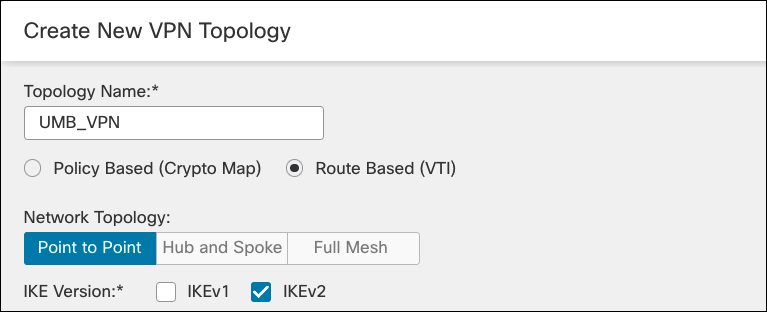
- Choose a Firepower device from the Device drop-down list for Node A and click Add to add a Virtual Tunnel Interface.
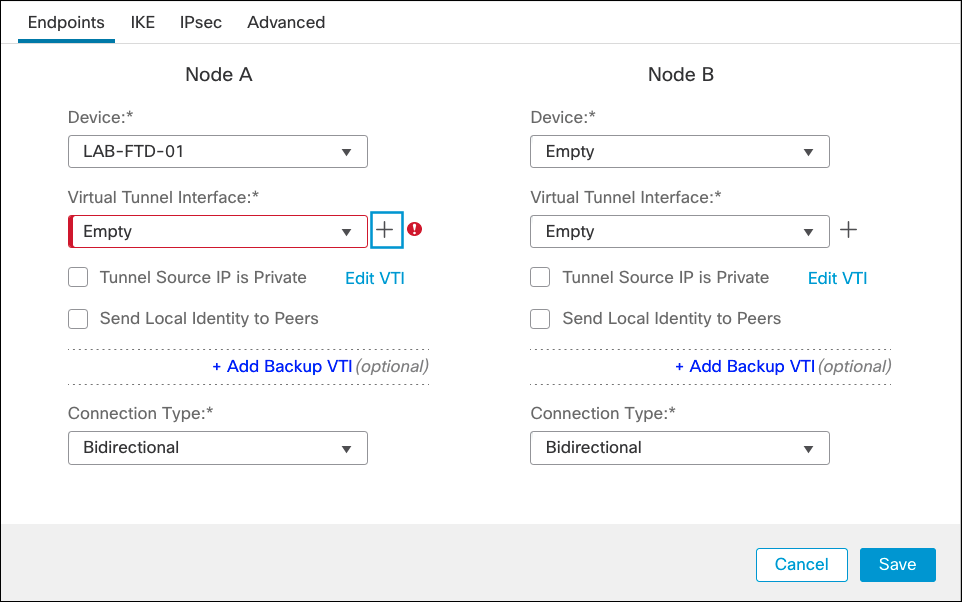
- Enter a name for the VTI, choose an existing Security Zone or create a new for the tunnel, enter a Tunnel ID and an IP address (a /30 subnet to accommodate local device and remote IP), and select the OUTSIDE interface as tunnel source. Then click Ok.
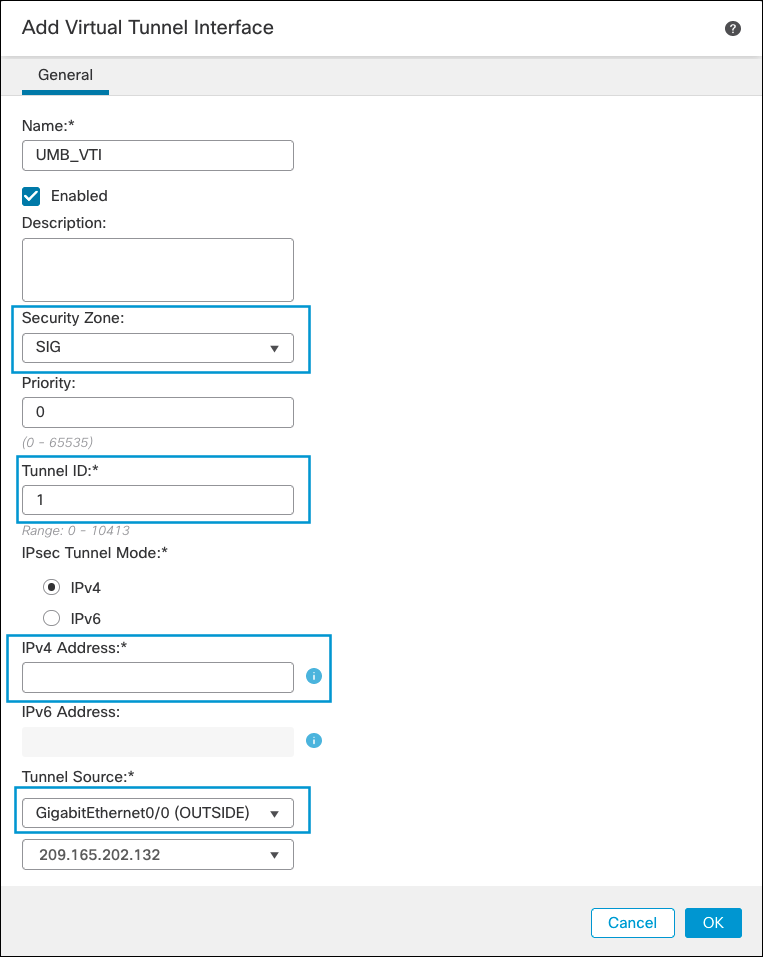
- Select the VTI you just created, and under Send Local Identity to Peers select Email ID and type the previous created tunnel FQDN.
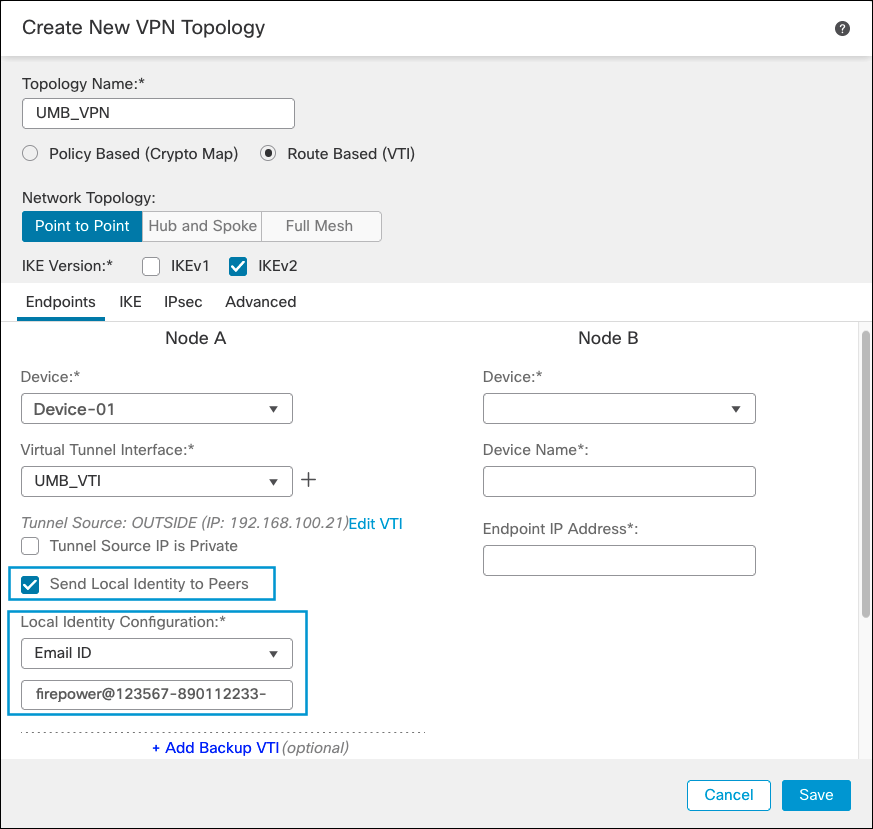
- Under Node B, choose Extranet as the device, enter a name and Umbrella Datacenter IP address.
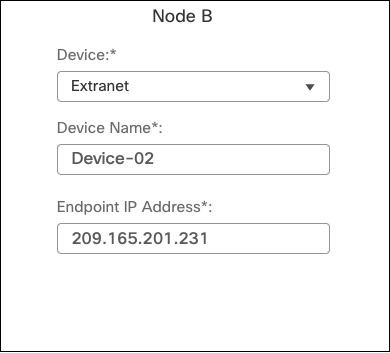
- Enter a name for the IKEv2 policy, then select the parameters from the Umbrella list.

- After saving the IKEv2 Policy, select it. Choose Pre-shared Manual Key from the Authentication drop-down list and enter the key.

- Under IPSec Configuration, add a new IKEv2 IPsec Proposal with your crypto algorithms or select an existing profile. Select Tunnel for IKEv2 Mode and uncheck Enable Reverse Route Injection and Enable Perfect Forward Secrecy.

- In the Advanced tab under IKE, enable IKE Keepalive. Select autoOrDN as the Identity Sent to Peers, and disable Peer Identity Validation. Then click Save.

Configure Policy-based Routing
- Navigate to Devices > Device Management and click the name of the device to edit.
- Under Routing > Policy Based Routing, click Add to add a new policy
- Choose the Inside for the Ingress Interface (user’s facing interface where PBR will be applied) and click Add.

- Choose the existing extended ACL, and click Add.
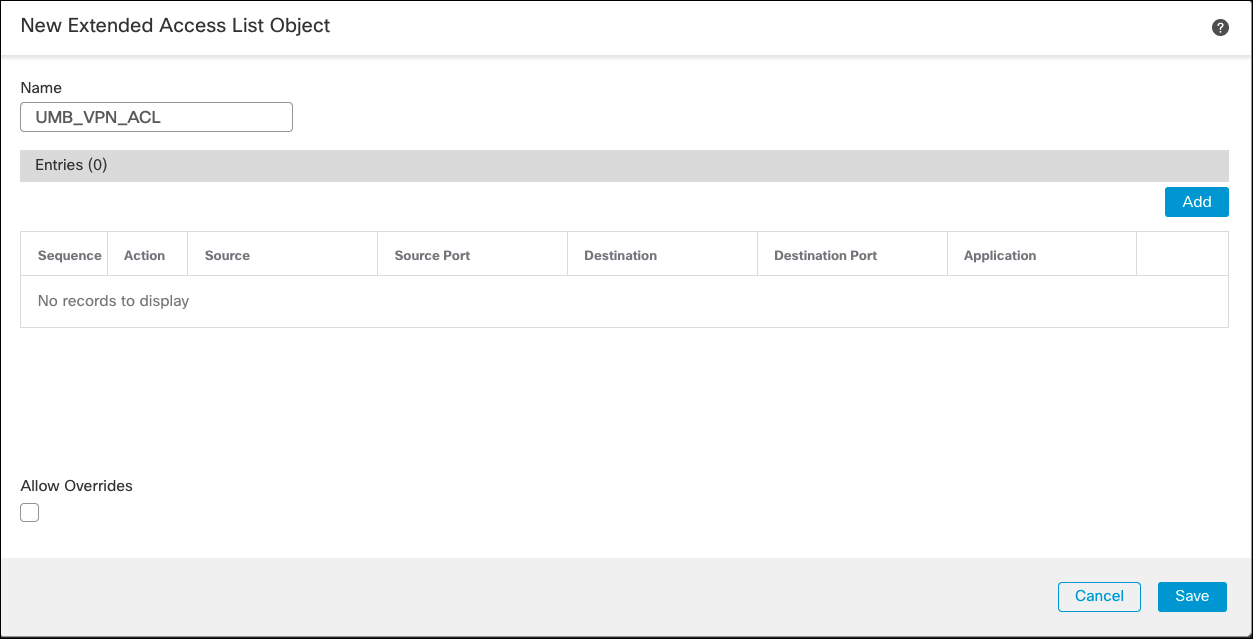
Alternatively, if you are creating a new ACL, enter a name and add Access Control Entries (ACE) matching the traffic that should be redirected to Umbrella.
- Click Save to add the access entries.
6. Under Match ACL, choose the newly created ACL and under Send To choose IP Address. Type the IP address in the same subnet previously used for VTI and click Save
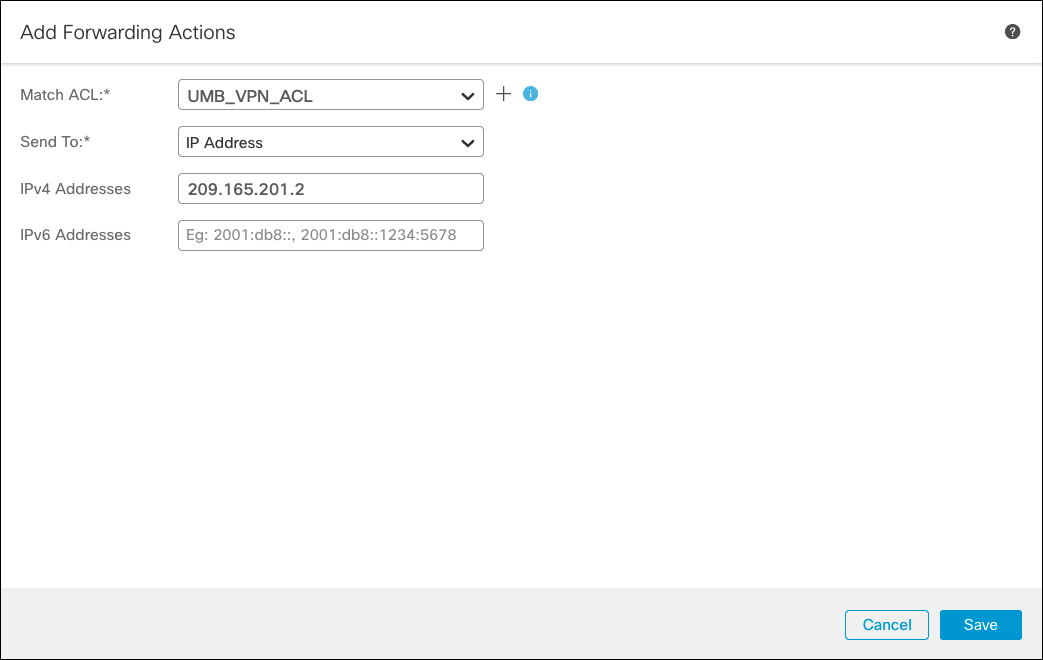
- Click Save to save the configuration and deploy.
Configure Access Policy
If not yet allowed by the access policy, add an access entry allowing traffic from inside the network to Umbrella tunnel.
Troubleshooting
Cisco Secure Firewall Management Center has a VPN troubleshooting tab where VPN-related events are displayed. By default, only error messages are sent from FTD to Cisco Secure Firewall Management Center, as LINA code (ASA) is responsible for the IPSec tasks the same commands available for troubleshooting the ASA devices are available in FTD.
If you need to send VPN debug messages to Cisco Secure Firewall Management Center, change the logging level in the Platform Settings policy. This policy is configured and added in Devices > Platform Settings. VPN logging to Cisco Secure Firewall Management Center is in the Syslog section of the Platform Settings policy from the Logging Setup tab. It is also possible to send logging messages to other destinations, such as the FTD device internal buffer.
Enable Logging for Debugging
- In Cisco Secure Firewall Management Center, navigate to Devices > Platform Settings.
- Under Basic Logging Settings, add a logging destination.
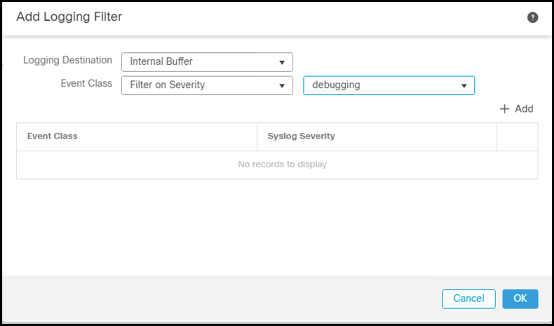
- Under Logging Destinations tab, click Add, then select Internal Buffer (or another logging destination). Set the logging level to Debugging.
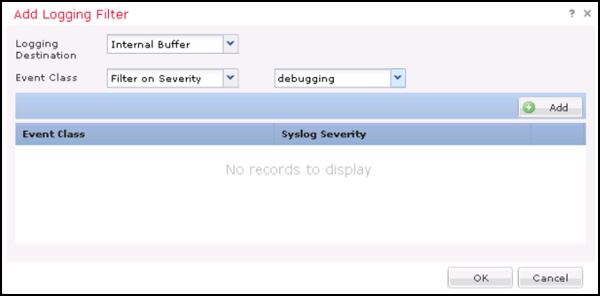
When logging is enabled, you can enable IKEv2 debug, SSH to FTD. Then enter type debug crypto ikev2 platform and debug crypto ikev2 protocol. These two debugging options provide detailed information about IKEv2 negotiation.
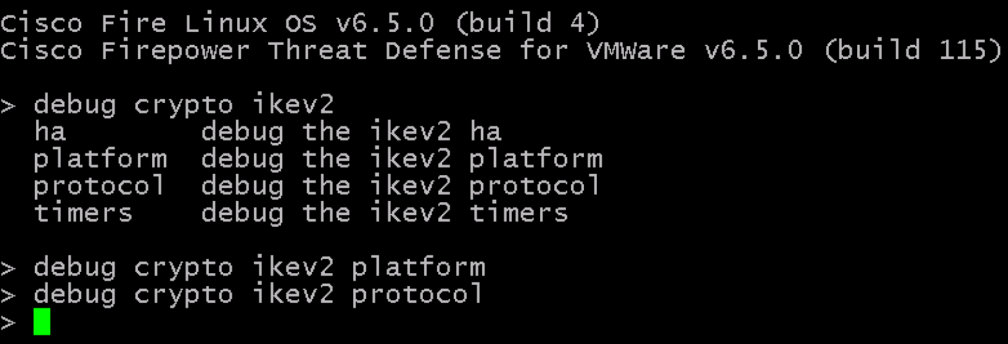
- After enabling debugging in the FTD device, return to Cisco Secure Firewall Management Center and navigate to Devices > VPN > Troubleshooting. IKEv2 negotiation debugging information is available.
If debug destination internal buffer was configured, going back to the FTD device via SSH is also possible. This enables you to see debug messages in the FTD terminal.
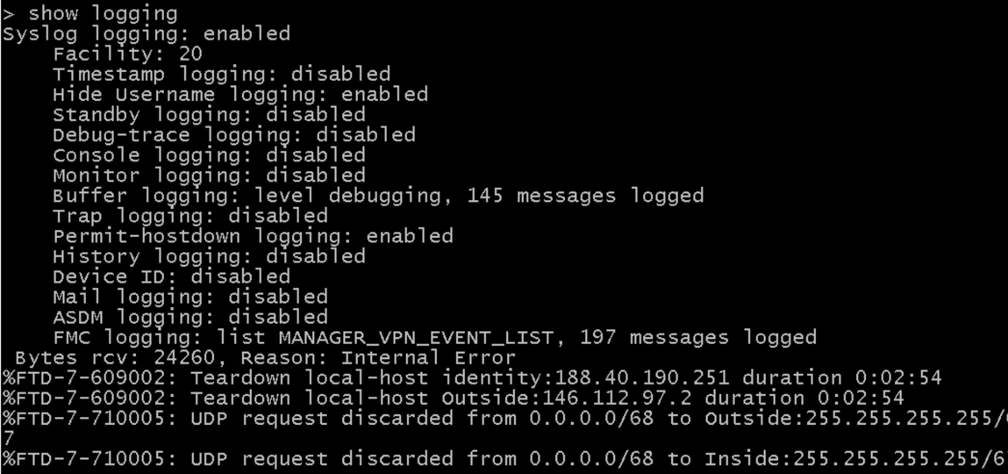
To access the LINE portion of the code, enter the command system support diagnostic-cli.
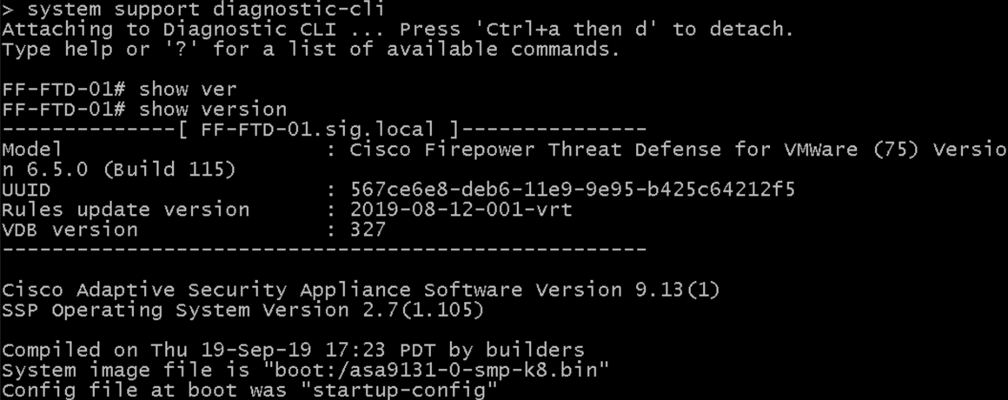
Configure Tunnels Automatically with Cisco ASA and CDO < Configure Tunnels with Cisco Secure Firewall > Configure Tunnels with Palo Alto IPsec
Updated about 2 months ago
